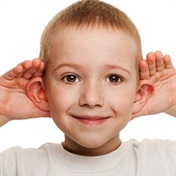Those with permanent hearing loss, caused by age or noise damage, can use hearing devices to improve hearing and communication. There are two main types of hearing devices:
Hearing aids
A hearing aid is a small system which amplifies sound. It consists of a microphone, an amplifier and a loudspeaker.
Advances in the development of hearing aids over the last few years have brought a new dimension to the aid available to help the hearing impaired person to hear and more importantly to decipher speech despite the presence of background noise.
Hearing aids differ in size – from the older behind-the-ear type to a very small, almost unnoticeable hearing aid which fits in the ear canal.
Read: Types of hearing aids
A key to success in helping hearing impaired people adjust to the hearing world (socially as well as professionally) is the early examination of hearing loss, accurate diagnosis and the fitting of high technology hearing aids which meet the unique needs of the hearing impaired person.
Unfortunately some people wait as long as ten years before they address the problem. If hearing loss is left untreated for a long time, the person’s ability to hear speech will gradually decrease up to the point where they begin to isolate themselves by avoiding situations where communication is necessary – especially in a crowd. This could lead to depression and stress-related illnesses.
Cochlear implants
Not all deaf children benefit from conventional hearing aids. Fortunately there is a solution for some profoundly deaf children or those with total sensorineural hearing loss who are not able to gain sufficient auditory information to acquire verbal communication – a multi-channel cochlear implant.
Many people are deaf because their inner ear is damaged. Most of them still have some remaining nerve fibres in the ear. These nerve fibres may be capable of sending impulses (sound) to the brain if stimulated electronically.
The cochlear implant can do just that. During cochlear implantation an electrical apparatus is surgically implanted into the bone behind the ear. It consists of a microphone (which receives sounds), a speech processor (which selects usable sounds) and a coil (which decodes and sends electric impulses to the electrodes). These components are worn externally.
The device which is implanted surgically into the bone behind the ear is a receiver which picks up the signals transmitted by the coil and in turn relays them to an electrode array which is introduced into the cochlea itself.
The electrical impulses are transmitted via 22 implanted electrodes in the cochlea to the auditory nerve. The transmitting coil and the internal antenna of the receiver each have a magnet and these hold the coil in place over the antenna across the intact intervening skin. The impulses are then interpreted by the brain as sound and a sensation of hearing is experienced.
This system allows the deaf person who has received a cochlear implant to be able to identify normal, daily environmental sounds, for example the doorbell, a dog barking, a knock on the door, car engines and hooters, a telephone ringing and background music.
Most children can recognise the rhythm and intonation of speech patterns and can identify some words. Their auditory skills also improve. It can also help the child to recognise speech even without lip-reading in some cases. This is not always the case, as individual children differ widely in the benefit that they receive from the cochlear implant, but the prognosis for normal speech and language development increases dramatically the younger the child is at implantation, which makes early diagnosis of an impairment so critical.
The cochlear implant has its limits. The apparatus does not normalise hearing and the sound that is generated by the implant differs from normal hearing, although this difference is decreasing rapidly as technology is advancing making implants a realistic option for an ever-increasing number of patients.
It is essential that a person who has received a cochlear implant receive intensive hearing and communication training from professionals who are experienced in working with the deaf. The child needs help in order to interpret the sounds he or she hears and, if possible, to use the sound to develop spoken language.
The Carel du Toit Centre at Tygerberg Hospital offers this service. For more information regarding cochlear implants, contact them at (021) 938 5312 or the Cochlear Implant Unit at (021) 938 9494/938 5080.
Selection criteria
There are strict selection criteria for candidates of cochlear implants. The selection criteria are:
- Profound or total sensorineural hearing loss in both ears
- Little or no benefit from hearing aids
- The family must be motivated and supportive and have realistic expectations.
- For adults, one of the criteria is that hearing must have been lost after the acquisition of a spoken language.
Read more:
Preventing hearing loss
Written by Liesel van Niekerk, speech and hearing teacher and author of Listening and Language Home Programme
Reviewed by Dr D. Wagenfeld, M.B.Ch.B, M.Med, F.C.S.




 Publications
Publications
 Partners
Partners
















